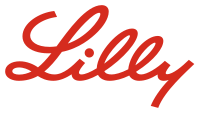
Photo from wikipedia
Background Despite current treatment options, patients with rheumatoid arthritis (RA) report fatigue and pain, important determinants of quality of life.1 In prior analyses of a Phase 3 trial of baricitinib… Click to show full abstract
Background Despite current treatment options, patients with rheumatoid arthritis (RA) report fatigue and pain, important determinants of quality of life.1 In prior analyses of a Phase 3 trial of baricitinib (RA-BEAM), baricitinib demonstrated superiority in pain and fatigue reduction over MTX and adalimumab2 and this pain reduction was associated with improvement in work productivity.3 Objectives In this post hoc analysis of RA-BEAM, the relationship between fatigue and pain with work productivity was assessed. Methods Fatigue was measured with the Functional Assessment of Chronic Illness Therapy-Fatigue (FACIT-F, range of 0–52, higher scores represent less fatigue) and pain with the patient‘s assessment of pain (0–100 mm VAS, higher scores represent greater pain). The Work Productivity and Activity Impairment Questionnaire-RA (WPAI-RA) instrument evaluated the percentages of activity impairment due to RA (impairment in regular daily activities), work-time missed due to RA (absenteeism), impairment while working due to RA (presenteeism), and overall work impairment due to RA (work productivity loss). Analyses were based on pooled data from randomised patients who received ≥1 dose of study drug. Analyses for impairment in regular daily activities included all patients and for absenteeism, presenteeism, and work productivity loss, patients employed both at baseline and at Weeks 12 or 24 were included. Pain was divided into pain reduction groups (<30%, 30%–<50%,≥50%) and actual pain score (≤10 mm,>10–≤20,>20–≤40,>40 mm); fatigue was divided into fatigue improvement groups (<3.56,≥3.56) and actual FACIT-F normative value score (<40,≥40). Pairwise comparisons on improvement in WPAI-RA scores between pain/fatigue reduction groups at Weeks 12 and 24 were assessed by ANCOVA. Results At baseline across treatment groups, patients reported impairment in all of the WPAI-RA domain scores (absenteeism:12%–13%, presenteeism: 42%–46%, work productivity loss: 45%–49%, activity impairment: 56%–58%). Reductions in pain and fatigue were associated with improvements in regular daily activities, presenteeism, and work productivity (table 1). Patients who reported lower levels of pain and fatigue tended to experience greater improvement in presenteeism, work productivity, and regular daily activities compared to patients with higher levels of pain or fatigue (table 1). When patients reached a minimal pain level (pain VAS≤10 mm), no significant differences were observed in presenteeism and work productivity between patients with different levels of fatigue whereas regular daily activity continued to improve as fatigue improved (p≤0.001; table 1). No trends were observed with absenteeism. Similar results were observed by treatment group.Abstract AB0240 – Table 1 Improvement in WPAI Domain Scores at Weeks 12 and 24 Conclusions Reductions in pain and fatigue were associated with improved regular daily activity, presenteeism, and work productivity in RA, with larger reductions related to more improvement. When patients achieved minimal levels of pain, similar improvements in presenteeism and work productivity were observed regardless of fatigue level. References [1] Taylor PC, et al. Rheumatol Int2016. [2] Keystone EC, et al. Ann Rheum Dis2017. [3] Michaud K, et al. Ann Rheum Dis2017. Disclosure of Interest J. Pope Grant/research support from: Amgen, Bayer, BMS, GSK, Merck, Novartis, Pfizer, Roche, UCB, Consultant for: AbbVie, Amgen, Bayer, BMS, Celtrion, Lilly, Merck, Novartis, Pfizer, Roche, UCB, K. Michaud Grant/research support from: Pfizer, P. Emery Consultant for: Pfizer, MSD, Abbvie, BMS, UCB, Roche, Novartis, Samsung, Sandoz, Eli Lilly and Company, B. Zhu Shareholder of: Eli Lilly and Company, Employee of: Eli Lilly and Company, C. Gaich Shareholder of: Eli Lilly and Company, Employee of: Eli Lilly and Company, A. DeLozier Employee of: Eli Lilly and Company, X. Zhang Shareholder of: Eli Lilly and Company, Employee of: Eli Lilly and Company, C. Dickson Shareholder of: Eli Lilly and Company, Employee of: Eli Lilly and Company, J. Smolen Grant/research support from: AbbVie, Janssen, Eli Lilly and Company, MSD, Pfizer, Roche, Consultant for: AbbVie, Amgen, Astra-Zeneca, Astro, BMS, Celgene, Celltrion, Chugai, Gilead Glaxo, ILTOO, Janssen, Eli Lilly and Company, Medimmune, MSD, Novartis-Sandoz, Pfizer, Roche, Samsung, Sanofi-Aventis, UCB
Journal Title: Annals of the Rheumatic Diseases
Year Published: 2018
Link to full text (if available)
Share on Social Media: Sign Up to like & get
recommendations!